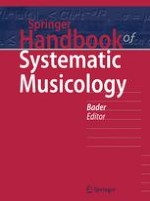2018 | OriginalPaper | Chapter
42. Music Learning: Automatic Music Composition and Singing Voice Assessment
Authors : Lorenzo J. Tardón, Isabel Barbancho, Carles Roig, Emilio Molina, Ana M. Barbancho
Published in: Springer Handbook of Systematic Musicology
Publisher: Springer Berlin Heidelberg
Activate our intelligent search to find suitable subject content or patents.
Select sections of text to find matching patents with Artificial Intelligence. powered by
Select sections of text to find additional relevant content using AI-assisted search. powered by
